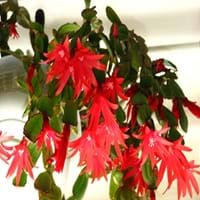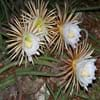Life Span
Perennial
Perennial
Type
Cactus or Succulent
Shrub
Origin
South America, Brazil
North America, United States, Northeastern United States, Mid-Atlantic United States, Southeastern United States, Canada
Types
Not Available
Red chokeberry, Purple chokeberry
Habitat
Rocky areas, Terrestrial, Tropical regions
Anthropogenic, Boggy areas, Cliffs, Fens, Swamps, Terrestrial, Wet lands, Woodlands
USDA Hardiness Zone
11-12
3-8
Sunset Zone
16, 17, 21, 22, 23, 24
A2, A3, 1a, 1b, 2a, 2b, 3a, 3b, 4, 5, 6, 7
Habit
Prostrate/Trailing
Thicket/Colonizing
Flower Color
Red, Magenta, Crimson
Not Available
Flower Color Modifier
Not Available
Not Available
Fruit Color
Non Fruiting Plant
Purplish-black
Leaf Color in Spring
Not Available, Pale Green
Not Available
Leaf Color in Summer
Dark Green
Not Available
Leaf Color in Fall
Dark Green
Not Available
Leaf Color in Winter
Dark Green
Not Available
Leaf Shape
Succulent
Elliptic
Plant Season
Spring, Winter
Spring, Summer, Fall
Sunlight
Full Sun
Full Sun, Partial Sun, Partial shade
Growth Rate
Medium
Medium
Type of Soil
Loam, Sand
Clay, Loam
The pH of Soil
Neutral
Acidic, Neutral, Alkaline
Soil Drainage
Well drained
Average
Bloom Time
Early Spring, Winter, Late Winter
Late Spring, Early Summer
Tolerances
Heat And Humidity, Heat Tolerance
Not Available
Where to Plant?
Container, Ground, Pot
Ground, Pot
How to Plant?
Stem Planting
Cuttings, Divison, Seedlings
Plant Maintenance
Low
Medium
Watering Requirements
Do Not over Water, Keep the ground moist but not water-logged, Never Over-water, Requires consistently moist soil, Requires regular watering, Requires watering in the growing season, Water more in summer
Average Water Needs, Do Not over Water, Requires regular watering
In Summer
Ample Water
Lots of watering
In Spring
Ample Water
Moderate
In Winter
Average Water
Average Water
Soil pH
Neutral
Acidic, Neutral, Alkaline
Soil Type
Loam, Sand
Clay, Loam
Soil Drainage Capacity
Well drained
Average
Sun Exposure
Full Sun
Full Sun, Partial Sun, Partial shade
Pruning
Remove damaged leaves, Remove dead leaves, Remove dead or diseased plant parts
Prune after flowering, Remove branches that rub together, Remove damaged leaves, Remove dead branches, Remove dead leaves, Remove diseased branches by the tool's blades dipped into the alcohol solution
Fertilizers
All-Purpose Liquid Fertilizer, fertilize in growing season, fertilize in spring
10-10-10, All-Purpose Liquid Fertilizer, Apply N-P-K
Pests and Diseases
Bacterial Diseases, Fungal Diseases, Red blotch
Red blotch
Plant Tolerance
Heat And Humidity, Heat Tolerance
Not Available
Flower Petal Number
Single, Semi-Double
Not Available
Foliage Texture
Bold
Not Available
Foliage Sheen
Not Available
Not Available
Attracts
Hummingbirds
Not Available
Allergy
breathing problems
Anaphylaxis
Aesthetic Uses
Beautification, Landscape Designing, Showy Purposes
Showy Purposes
Beauty Benefits
No Beauty Benefits
Good for skin
Environmental Uses
Air purification, Indoor Air Purification
Air purification, Food for birds, Wildlife
Medicinal Uses
No Medicinal Use
anti-cancer, Antioxidants, Cold
Part of Plant Used
Leaves
Fruits
Other Uses
Decoration Purposes, Showy Purposes, Used as Ornamental plant
Pectin
Used As Indoor Plant
Yes
No
Used As Outdoor Plant
Yes
Yes
Garden Design
Container, Hanging Basket, Houseplant, Tropical
Foundation, Mixed Border
Botanical Name
Hatiora gaertneri
ARONIA melanocarpa
Common Name
Whitsun cactus
Black Chokeberry
In Hindi
ईस्टर कैक्टस
Black Chokeberry Shrub
In German
Osterkaktus
Schwarz Aronia Strauch
In French
cactus de Pâques
Noir Chokeberry Arbuste
In Spanish
cactus de Pascua
Chokeberry negro Arbusto
In Greek
Πάσχα κάκτος
Μαύρο Chokeberry θάμνων
In Portuguese
cacto Páscoa
Chokeberry preto Arbusto
In Polish
Wielkanocny kaktus
Krzew aronii
In Latin
Pascha Cactus
Lichen Frutex
Phylum
Tracheophyta
Magnoliophyta
Class
Magnoliopsida
Magnoliopsida
Order
Caryophyllales
Rosales
Family
Cactaceae
Rosaceae
Clade
Angiosperms, Core eudicots, Eudicots
Angiosperms, Eudicots, Rosids
Tribe
Rhipsalideae
Maleae
Subfamily
Cactoideae
Amygdaloideae
Number of Species
Not Available
Not Available
Season and Care of Easter cactus and Black Chokeberry
Season and care of Easter cactus and Black Chokeberry is important to know. While considering everything about Easter cactus and Black Chokeberry Care, growing season is an essential factor. Easter cactus season is Spring and Winter and Black Chokeberry season is Spring and Winter. The type of soil for Easter cactus is Loam, Sand and for Black Chokeberry is Clay, Loam while the PH of soil for Easter cactus is Neutral and for Black Chokeberry is Acidic, Neutral, Alkaline.
Easter cactus and Black Chokeberry Physical Information
Easter cactus and Black Chokeberry physical information is very important for comparison. Easter cactus height is 25.40 cm and width 30.50 cm whereas Black Chokeberry height is 182.88 cm and width 182.88 cm. The color specification of Easter cactus and Black Chokeberry are as follows:
Easter cactus flower color: Red, Magenta and Crimson
Easter cactus leaf color: Not Available and Pale Green
Black Chokeberry flower color: Not Available
- Black Chokeberry leaf color: Not Available
Care of Easter cactus and Black Chokeberry
Care of Easter cactus and Black Chokeberry include pruning, fertilizers, watering etc. Easter cactus pruning is done Remove damaged leaves, Remove dead leaves and Remove dead or diseased plant parts and Black Chokeberry pruning is done Prune after flowering, Remove branches that rub together, Remove damaged leaves, Remove dead branches, Remove dead leaves and Remove diseased branches by the tool's blades dipped into the alcohol solution. In summer Easter cactus needs Ample Water and in winter, it needs Average Water. Whereas, in summer Black Chokeberry needs Lots of watering and in winter, it needs Average Water.





